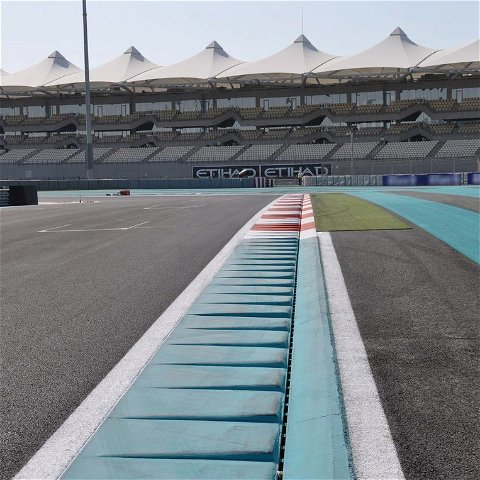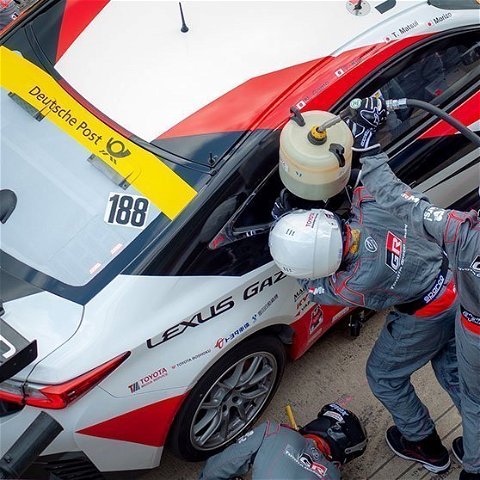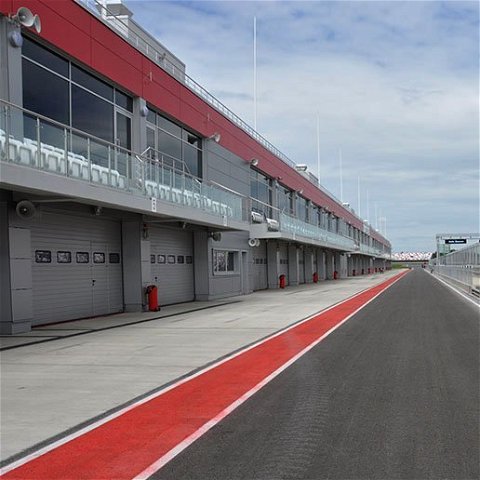Safe drainage for race tracks
With high speeds from racing vehicles imposing extreme forces on the track surface, a safe and secure drainage system is required to withstand this harsh environment. As racing vehicles cross over the channel system, gratings must also be sturdy enough to accommodate friction and impact forces. If insufficiently secured, the channel system components can be dislodged and thrown into the air at speed, posing a danger to drivers and spectators. The combined system of channel and grating must withstand the strong suction created by downforce from racing vehicles.
Requirements for race track drainage
A race track is more complex than it first appears. Circuits include run-off areas in locations where vehicles may unintentionally leave the track or for safe sanctuary. Positive or negative kerb profiles are included at the edge of the track when it changes direction. Furthermore, designated pit lanes allow drivers to exit the race track briefly to refuel or change tyres. An effectively drained track surface is crucial to ensure optimal safety for the driver and motor racing performance.
- Strength and stability during installation and competition:
Subject to possible traffic by site vehicles during installation and race cars crossing at speeds of over 300 km/h, the channel system should be strong, secure and stable during the life of the circuit.
- Precise installation:
To avoid sharp raised edges on the surface, channels must be laid precisely within a +/- 2 mm tolerance.
- Longevity:
The drainage system must ensure a long service life through high-quality materials and careful, precise installation.
- Avoiding aquaplaning:
At run-off zones there is an increased risk of aquaplaning due to slight surface gradients towards the direction of the track. An efficient drainage system must be installed here to ensure safety.
- Durable channels for the pit lane:
Surface drainage within the pit lane area must withstand extreme forces that occur when crossed by racing cars.
Paddock area
The paddock covers a vast surface area, which accommodates motorsports entourage during a racing event. Therefore, the paddock surface area is exposed to traffic from heavy goods vehicles (HGVs), motorhomes, trailers, hospitality units and other commercial vehicles. Furthermore, there is also a high volume of pedestrian traffic from motorsport crew and spectators.
As a result, choosing a paddock drainage system that meets various functional aspects must be considered to withstand load bearing vehicles and ensure pedestrian safety.
Pit lanes and garages
Pit lanes and garages are designated areas for motorsport teams pit crew to carry out mechanical work before or during the race event. They require safe cable management for mechanical equipment to perform quick repairs and adjustments to the racing vehicles. The drainage channel must ensure safe removal of any surface water, but also serve as temporary cable routing. The grating must be easily accessible. T and cross connections must also be accessible so that cables and wires can be placed directly from above without being threaded, whilst maintaining the hydraulic capability and structural stability of the channel system.
Spectator areas

Facilities provided for spectators on racing circuits require practical and effective drainage for external hard surfaces associated with pedestrian, retail and commercial areas, car parks and viewing stands.
-
Heelsafe grating options for a safe spectator environment
-
Grating designs with high aesthetic value
-
Corrosion-free channel systems for low long-term maintenance costs
Drainage solutions for motorsports – race tracks, pit lanes and paddock areas
Our HAURATON team of experts are driven to find the right solution for your project. Motorsports drainage must meet the highest safety and stability requirements. The drainage system should serve as viable protection from surface water to ensure the safety of drivers, crew and spectators.
HAURATON have many years of experience in providing drainage solutions for motorsports facilities. From Silverstone in the UK to Moscow Raceway in Russia – Our team of experts will be happy to advise you.
Advice from experts
Hydraulics
Installation support
Product solutions for motorsports construction


Galvanised steel or ductile iron edge rail with 40 x 40 mm insertion depth
– Ductile iron gratings
– GUGI ductile iron gratings
Retained ductile iron slotted top
Ductile iron
– Constant depth
– Built-in fall (150, 200, 300)
– Stepped fall
– Constant depth
– Stepped fall
- Constant depth
– SIDE-LOCK, boltless locking system
– 16 fixing points for grating/metre
– Radial installations possible
– Large channels for retention
– Channel run without slotted top achievable, for example, under planted areas
– Cable installations can be threaded though throat voids of the channel
SIDE-LOCK, boltless locking mechanism






